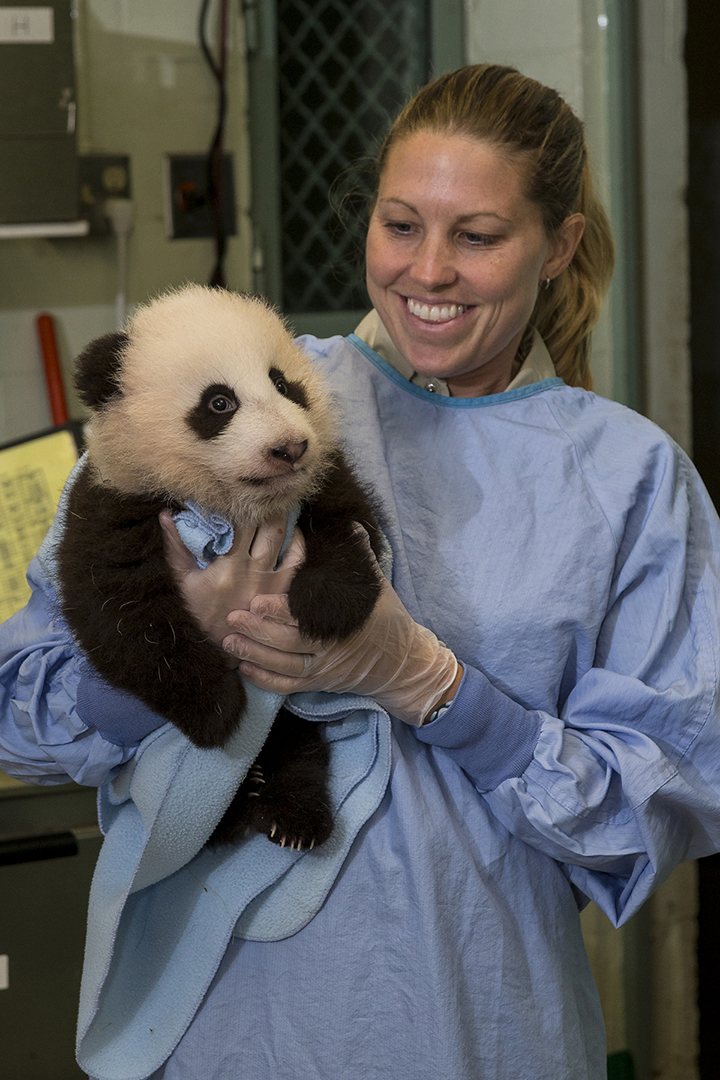It's Official! San Diego Panda Cub Gets a Name

The giant panda cub at the San Diego Zoo finally has a name. Staff announced during a ceremony at the zoo Tuesday (Nov. 13.) that they're calling him Xiao Liwu, or "Little Gift."
The full-bellied furball was born on July 29, but in keeping with a Chinese panda-naming tradition, zookeepers waited to name him until he was at least 100 days old.
In a public vote, with nearly 35,000 votes cast, Xiao Liwu beat out five other name suggestions, including Qi Ji (Miracle), Yu Di (Raindrop), Da Hai (Big Ocean or Big Sea), Yong Er (Brave Son) and Shui Long (Water Dragon).
Since his birth, caretakers have said the little panda's development is right on track. In September the cub gained limited vision, then in October, the cub began sprouting its baby teeth, and most recently, he's been pushing up on all four legs, getting closer and closer to walking. At his checkup last week, the cub weighed in at 9.2 pounds (4.1 kilograms) and measured 23 inches (58 centimeters) long from nose to tail.
The panda's mom, Bai Yun (White Cloud), has given birth to five other cubs at the San Diego Zoo. Four of those offspring were moved to China to join the country's giant panda conservation and breeding program. The panda mom's 3-year-old male cub, Yun Zi (Son of Cloud), remains at the zoo.
Only 1,600 giant pandas are thought to be left in the wild, and captive breeding is an important way to study and conserve the endangered species. In addition to habitat loss from encroaching human activities and low reproductive rates, pandas are also threatened by climate change. A study published in the Nov. 11 issue of the journal Nature Climate Change found that predicted warming in China over the next century will take out the panda's sole food source — bamboo. Their only chance to survive the looming food shortage? Bamboo would need to move to new habitats at higher elevations, the scientists said.
Follow LiveScience on Twitter @livescience. We're also on Facebook & Google+.
Get the world’s most fascinating discoveries delivered straight to your inbox.



